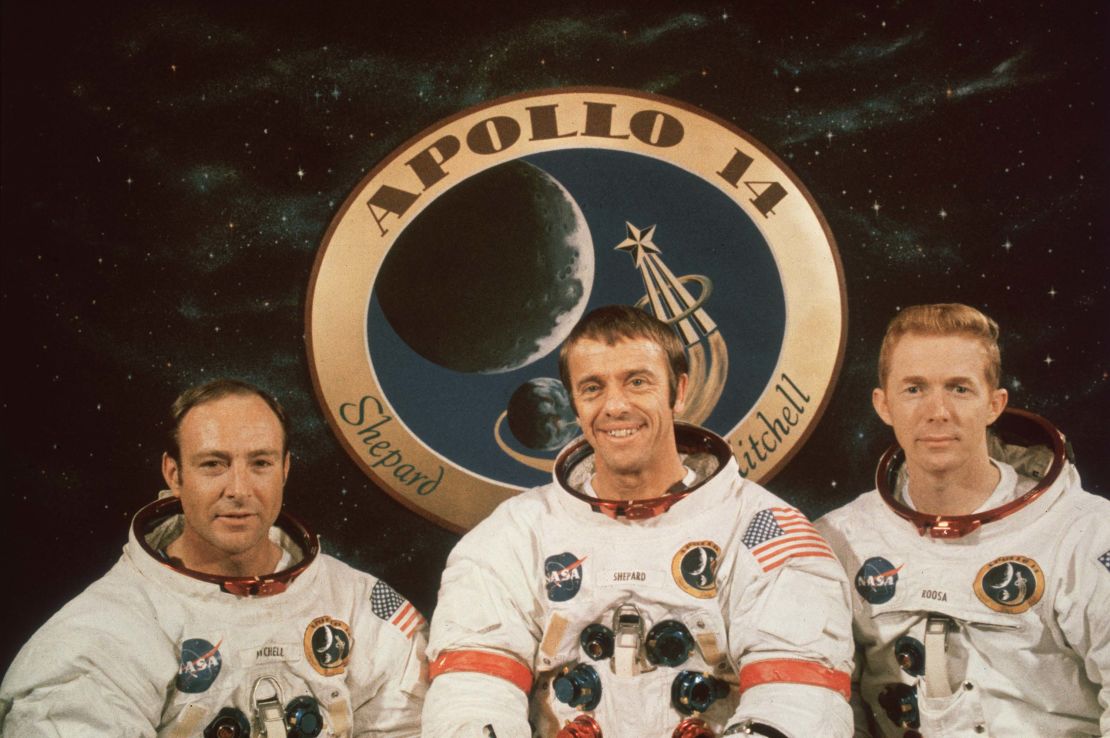Fifty years ago, NASA’sApollo 14 completed the third crewed mission to the moon. On board the spacecraft as it landed in the Pacific Ocean on February 9, 1971, was some unusual cargo – about 500 tree seeds.
The seeds – loblolly pine, sycamore, sweetgum, redwood and Douglas fir – had traveled with Stuart Roosa, one of the three NASA astronauts on the missionand a former US Forest Service parachute firefighter, sealed in small plastic pouches stored in a metal canister in his personal luggage. They were part of an experiment to see how seeds reacted to the space environment.
Upon their return to Earth, the seeds were germinated by the Forest Service. Known as the “Moon Trees,” the resulting seedlings were planted throughout the United States and the world, according to NASA. There was no systematic effort to keep track of them, but NASA has since tracked down about 60 trees – mainly in the US but also ones in Brazil, Japan and Switzerland.
Steve Miller, vice president of the Royal Astronomical Society and a professor at University College London, believes that someof these seeds or seedlings ended up inthe United Kingdom. He wants to know what happened to them, as does the UK Space Agency.
His quest began after he asked a popular BBC radio show “Gardener’s Question Time” about a suitable horticultural way to mark the Royal Astronomical Society bicentenary, celebrated in 2020.
Panelist and gardener Christine Walkden suggested he look for the trees grown from the moon seeds that she believed were planted in the UK and get a cutting from one of them.However, no evidence has been found that they exist in the UK.
Two potential recipients, Kew Gardens in London and the arboretum at Jodrell Bank, the UK’s main space observatory, have no records of the seeds that supposedly came to the UK, Miller said.
He’s now appealing to the public for any leads.
In the United States, many of the seeds were given away to state forestry organizations in 1975 and 1976 to be planted as part of the country’s bicentennial celebrations. According to NASA,a loblolly pine was planted at the White House. Trees have also been planted in Washington Square in Philadelphia, in the International Forest of Friendshipat Valley Forge, and at various universities and NASA centers.
Miller has been able to track down a “half moon tree” created from a cutting taken from one of the moon trees that was plantedin the United States. The half moon tree is growing in a private garden in the village of Flamstead in the Chiltern Hills to the north of London. The RAS has been promised a cutting from that tree for its bicentenary.

“We’re incredibly grateful for that,” Miller said. “But we still want to know if any Apollo 14 seeds did come to the UK, and – if so – just what happened to them?”
The tree seeds on the Apollo 14 mission weren’t part of a systematic experiment. When Apollo astronauts went to the moon, they were allowed to bring a handful of personal items. One of the astronauts, the late Alan Shepard, packed golf balls – becoming the first person to golf on the moon.
His crewmate, the late Roosa, decided to take something to honor American forests, a tribute to his past as a smoke jumper – someone who parachutes into remote wilderness areas to put out wildfires.
However, scientists were subsequently eager to study the seeds, since at the time few experiments had tested the effects of space on botanical specimens. The Forest Service studied the genetic structure of the seeds, investigating whether they would sprout and grow normally. (They did.)

Since then, other seeds have made the journey into space and successfully sprouted. In 2015, 2 kilograms (4.4 pounds) of salad seeds spent six months on board the International Space Station and were successfully planted back on Earth – although they grew more slowly than their counterparts that didn’t leave Earth.
The UK is also home to seven apple trees that went on a mission to the space station. The UK Space Agency cultivated the seeds from the very tree that inspired Isaac Newton to discover gravity.
“Sending seeds to space helps us understand the effect of the unique environment on seeds’ biological makeup. Understanding the effects of space on ungerminated seeds will be vital for future space missions, including when we look to sustain human life beyond Earth,” said Libby Jackson, Human Exploration Manager at the UK Space Agency, in a statement.
“Space has a wonderful way of inspiring people. We saw that excitement when space saplings grown from the seeds from Newton’s apple tree were planted on our soil. I’ll be interested in discovering if any of the Moon seeds came to the UK and what has become of them.”







